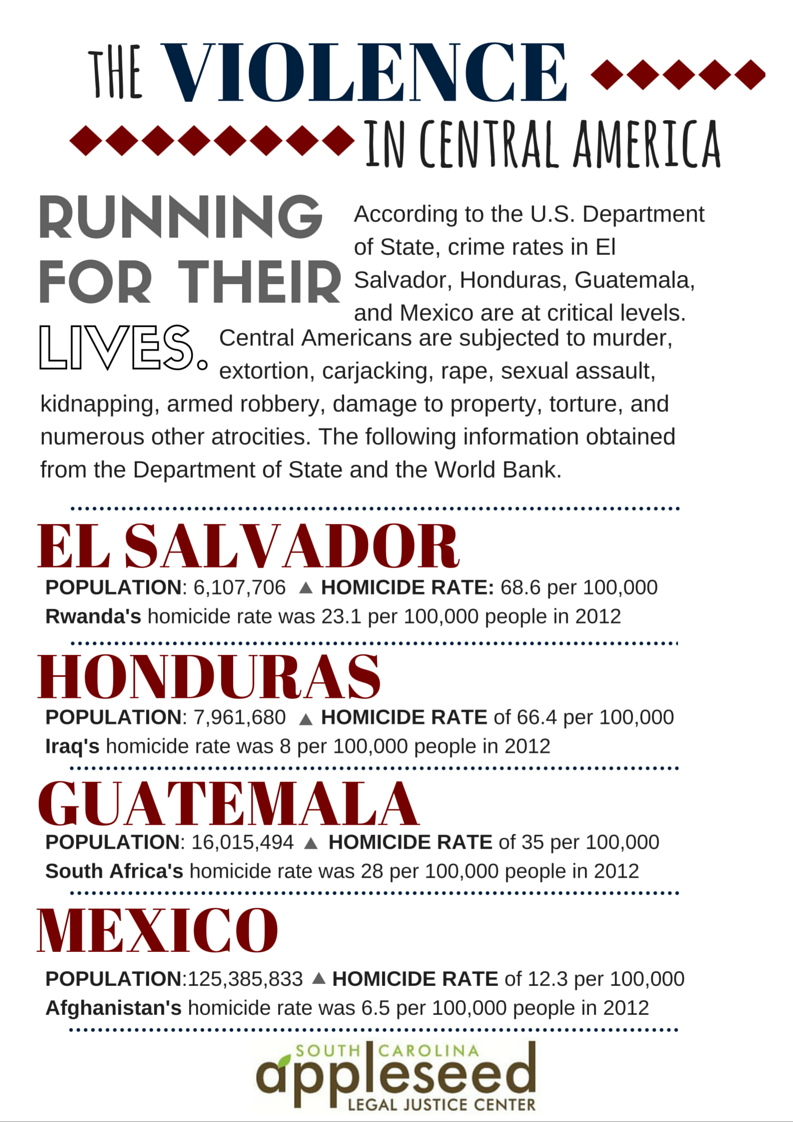Posted in Blog, Immigration
This is part one of a two part series entitled, “What Motivates Immigration to the United States from Mexico and Central America”.
I M A G I N E living in a place that you feel threatened every time you walk out your front door; where when you walk outside, you can expect to see dead bodies and vandalism because organized crime has a firm grip on the country? A country where adolescents are being drafted into criminal organizations and those that refuse could be killed?
In addition to organized crime and gangs, Latin America has faced economic turmoil due to conflict in the region and soaring national debts as a result. National economic hardship has notoriously gone hand in hand with corruption, violence, and crime. Latin America has certainly experienced these hardships. While Latin American economies are slowly growing, jobs are not abundant for most people in the region. When it comes to the violence, police forces in Latin America are stretched to their limits. Crime is so rampant that they typically have to prioritize which crimes are most pressing and therefore need their immediate attention and tend to those first. Many police officers also fear for their lives. When the War on Drugs was at its peak, most police officers in high-crime places in Mexico would wear ski masks, for fear that if the cartel members saw their faces, they would come after them and their families.
According to the World Bank, Latin America accounts for more than 30% of the world’s homicides. Crime in Latin America is spotty, most of the crime taking place in specific parts of the countries. These high-crime areas are not usually near the capitals where the police have the most control, but instead, further out where the government influence gets weaker and weaker until it’s almost nonexistent at the countries’ borders. These border areas, largely controlled by the gangs and cartels, are where the majority of immigrants who come across the US southern border originate. The Boston Globe published an article recently discussing the possibility of El Salvador surpassing neighboring Honduras for the title of deadliest country in the world. A recent surge of gang violence in El Salvador has more than doubled the amount of homicides in the country since last year.
If you had to live and raise your children in one of these environments and you knew there were better, safer places to go in the world, what would you do? Imagine living in a country ridden with poverty and violence, all the while knowing that a better life exists right next door. How many country borders would you cross until you reach safety even though you did not have permission to do so? That is what many Mexicans and Central Americans have done.
Some people may say well they should wait and come legally. Make sure to follow part two of this blog where we break down why that is not always possible. In the meantime, check out this infographic that breaks down the violence in Mexico, Guatemala, El Salvador and Honduras.



